Clarify
Clarify is an AI-driven CRM that unifies customer data, automates sales tasks, and provides actionable insights for revenue teams. It aims to simplify pipeline management and boost efficiency. Here’s a detailed look at its features, strengths, weaknesses, and how it stacks up against competitors.
The tool centralizes customer data from emails, meetings, and external platforms, automatically tracking interactions to reduce manual work. Its LinkedIn integration pulls contact details directly, while the auto-nudge feature sends reminders for stagnant deals. The meeting intelligence feature transcribes calls, generates tasks, and drafts follow-up emails, all through a desktop app. Data enrichment fills in lead profiles, saving time for sales reps. The interface is fast, with data-heavy pages loading two to three times quicker than older CRMs, and flexible lists or drag-and-drop boards make pipeline management intuitive.
Compared to competitors like Salesforce and HubSpot, Clarify focuses on automation and ease of use. Salesforce offers robust customization but can feel complex, while HubSpot emphasizes marketing alongside sales. Clarify’s credit-based pricing, where actions consume credits, differs from the subscription models of competitors, offering flexibility but less predictability. The tool integrates with tools like Zoom, Slack, and Calendly, streamlining workflows for teams already using these platforms.
Drawbacks include the credit system’s lack of transparency, which may confuse users accustomed to fixed pricing. The AI’s suggestions, such as email drafts or field updates, can sometimes lack nuance, requiring manual tweaks. Setup for integrations may take time for less tech-savvy users. However, the free plan allows teams to test features without commitment, and support responds within 24 hours.
Clarify suits small to medium-sized businesses looking to automate sales tasks. Test the free plan, monitor credit usage, and use the support team to streamline setup.
Video Overview ▶️
What are the key features? ⭐
- Data Enrichment: Automatically fills in lead profiles with missing details.
- Meeting Intelligence: Transcribes calls and generates tasks or follow-up emails.
- Auto-Nudge: Sends reminders for stagnant deals to keep pipelines active.
- LinkedIn Integration: Pulls contact and connection data directly into the CRM.
- Flexible Pipeline Management: Offers customizable lists or drag-and-drop boards.
Who is it for? 🤔
Examples of what you can use it for 💭
- Startup Founder: Uses Clarify.ai to automate lead enrichment and focus on closing deals.
- Sales Rep: Tracks emails and meetings automatically to prioritize client outreach.
- Revenue Operations Manager: Builds custom workflows to streamline go-to-market strategies.
- Small Business Owner: Manages pipelines with drag-and-drop boards for easy oversight.
- Marketing Team Lead: Integrates product analytics to enrich CRM data for campaigns.
Pros & Cons ⚖️
- Automates tedious CRM tasks.
- Clean, fast interface.
- Free plan available.
- AI suggestions may need tweaks.
- Setup may take time.
FAQs 💬
Related tools ↙️
-
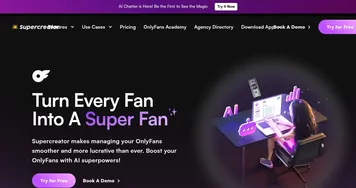 Supercreator
An AI platform designed to enhance the management and growth of OnlyFans accounts
Supercreator
An AI platform designed to enhance the management and growth of OnlyFans accounts
-
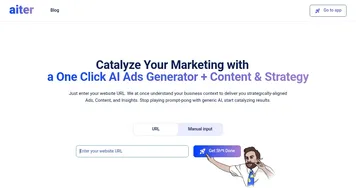 Aiter
Get text ads, ideas for strategy, content, and SEO/PPC keywords for your product
Aiter
Get text ads, ideas for strategy, content, and SEO/PPC keywords for your product
-
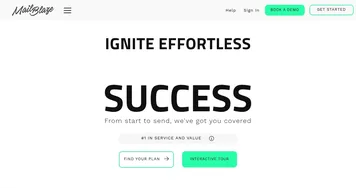 MailBlaze
Creates and sends email campaigns with AI-powered content tools
MailBlaze
Creates and sends email campaigns with AI-powered content tools
-
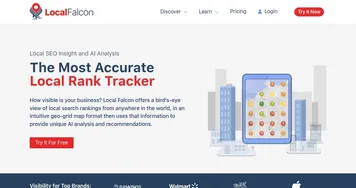 Local Falcon
Using AI to help business win on in Google local results and Google Maps
Local Falcon
Using AI to help business win on in Google local results and Google Maps
-
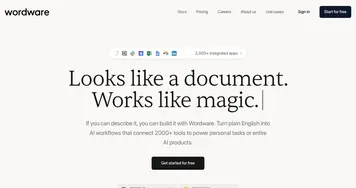 Wordware
A powerful platform that allows users to build AI applications using natural language
Wordware
A powerful platform that allows users to build AI applications using natural language
-
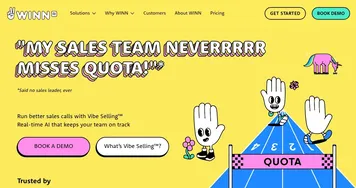 WINN.AI
Automates sales tasks and guides reps in real-time to boost efficiency
WINN.AI
Automates sales tasks and guides reps in real-time to boost efficiency

